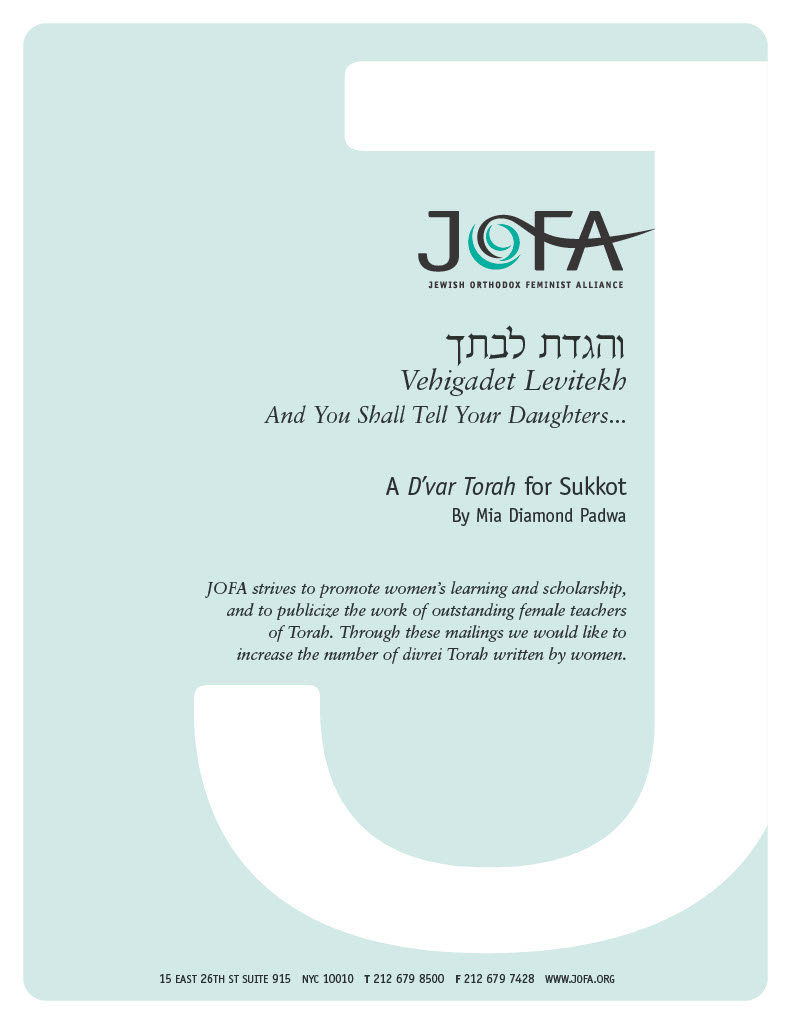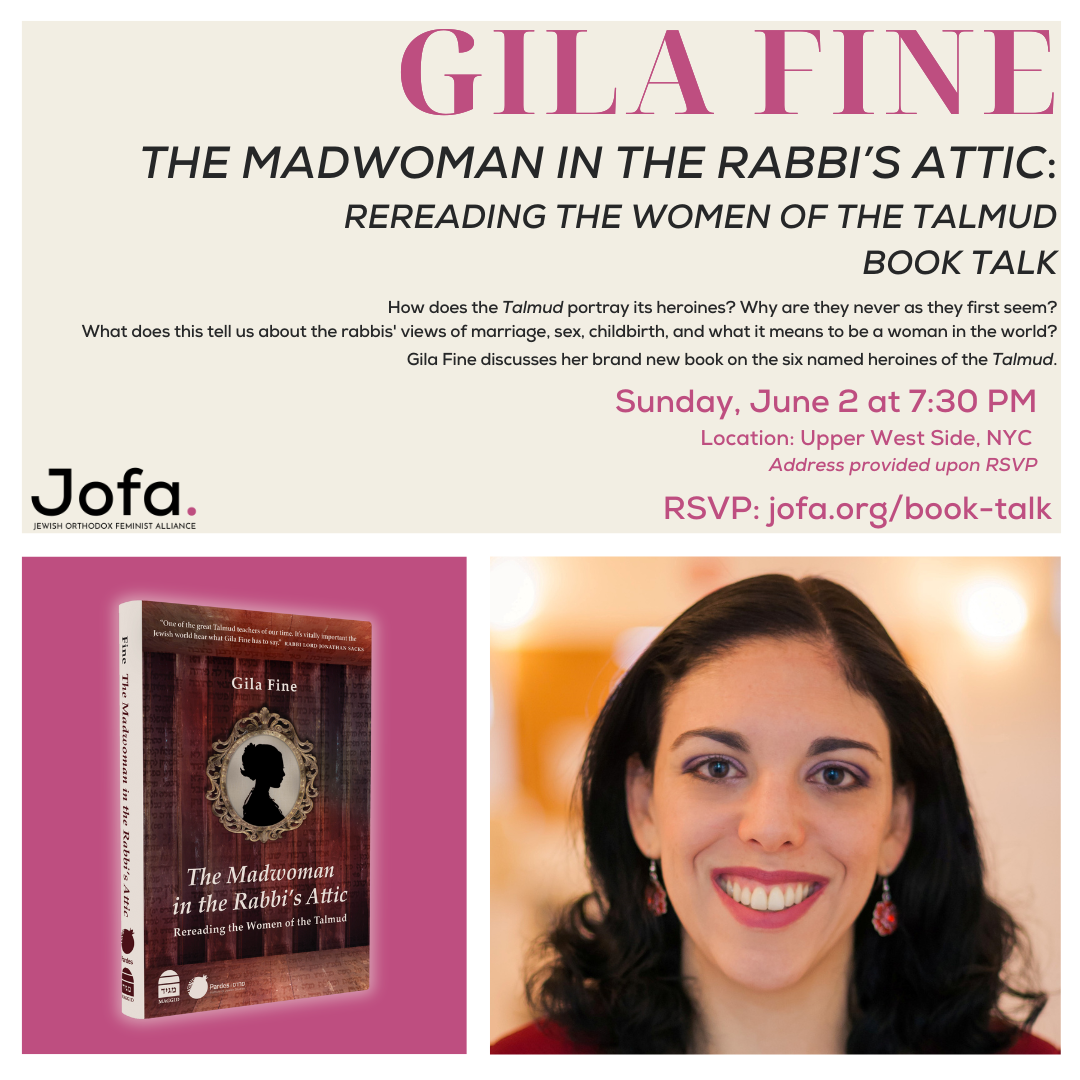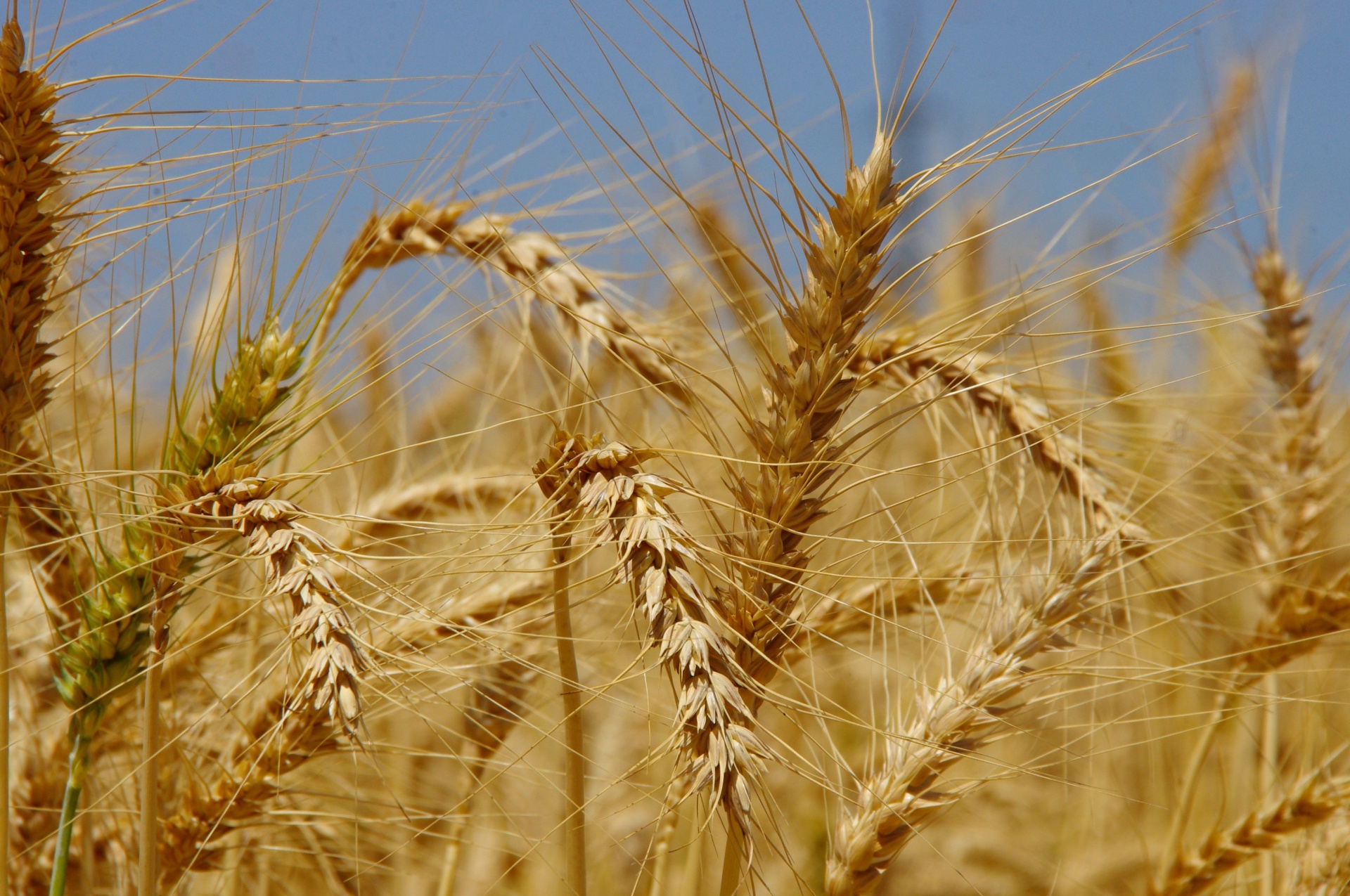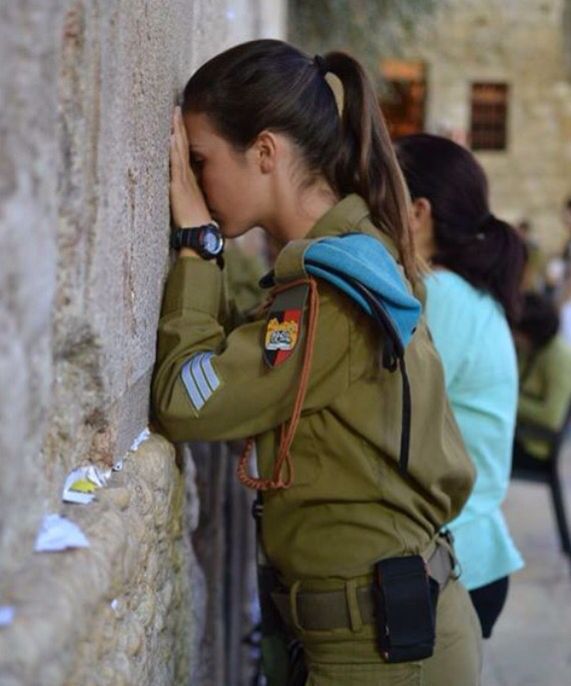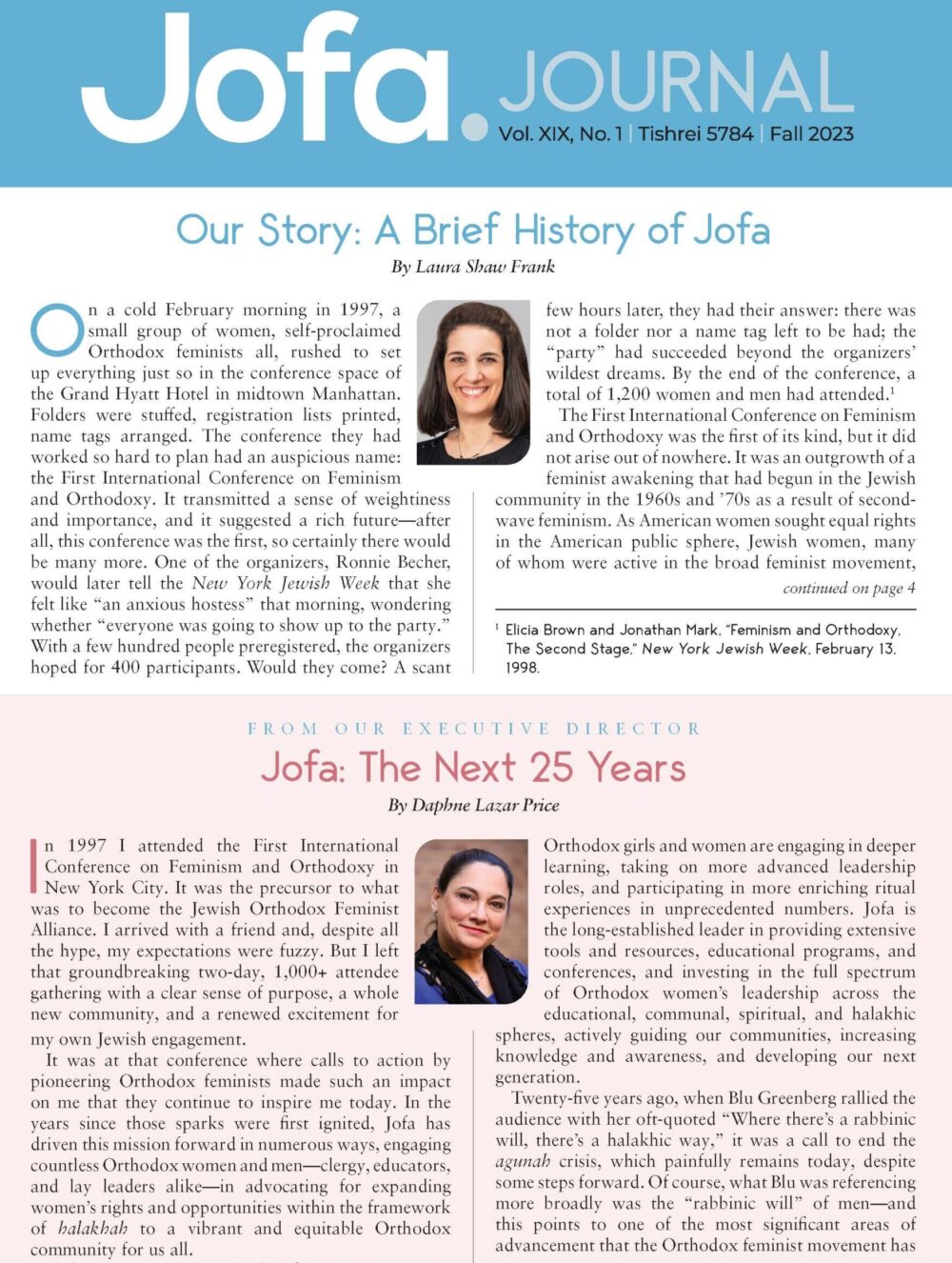By Mia Diamond Padwa [1]
Chag-ha-Sukkot, the holiday of Sukkot, as it appears in the Torah, is grouped with two distinctly different clusters of holidays. On the one hand, it is presented as one of the shalosh regalim (three pilgrimage festivals), which in ancient times were the great gathering times at the Temple in Jerusalem.[2] It is also, however, listed in its natural setting according to the cycle of the year along with the other holidays celebrated in the month of Tishrei, immediately following Rosh Hashanah and Yom Kippur.[3] These two different contexts for Sukkot suggest a wide range of possible themes, making it harder to grasp any single elemental message of the holiday. Is its dominant motif agriculture or ritual? Shelter or exposure? Is Sukkot a time to dignify our desert wandering, or to celebrate being safely rooted?
To better define the essential nature of this chag, let us look at the first time the term is employed in the Torah. Devoid of any connection to the holiday, “Sukkot” is instead used as a place name. After the tension of the emotional confrontation with his estranged twin brother Eisav (Esau), Yaakov (Jacob) needs a shelter for his family and cattle. He builds them “sukkot (booths),”[4] and they rest there, according to the Midrash, for eighteen months.[5] Following the narrative of the threat to the family’s physical safety posed by Eisav, and preceding the rape of Dina and the resultant violence in Shechem, the time in the sukkot provides Yakkov and his wives and children with a peaceful respite from emotional strife and a protection from real-world dangers.
It is this theme of a protected interlude which resonates the most as we attempt to understand Sukkot in a contemporary context. That is, it has the status of a moed(sacred time) in its own right, and it stands as a week-long interlude between Rosh Hashanah/Yom Kippur and the return to the chol (ordinary time) of the month of MarHeshvan. Likely it was very different during the era of the Second Temple, when each Sukkot pilgrimage would reawaken memories of the previous festival march. The streets thronged with travelers, lulavim bobbing aloft on their shoulders, Jews everywhere converging on their sacred site—the connection between Sukkot and the other pilgrimages must have been obvious. But today, and all the more so for those of us outside of Israel, Sukkot’s most immediate association is the connection with the preceding fall holidays.
Those days, the Aseret Yemei Teshuvah, or, Ten Days of Repentance, strike notes not sounded the rest of the year. We confront God’s majesty and monarchical grandeur on Rosh Hashanah, sitting down to elaborate meals of rich, symbolic foods. After passing through a week of introspection and penitence, we enter the Day of Atonement. On Yom Kippur we expose our innermost selves in our simple white clothes, and bare our souls in the quest for atonement. We deny our own physicality, struggling to put the body and its needs far away from our spiritual experience. Stomachs grumbling, sweaty bodies pressed tightly in shul, sneakered feet holding us upright for hours, we pray through the day, until our voices can davenno more, and only the shofar’s sobs speak for us. We emerge from Rosh Hashanah and Yom Kippur scrubbed clean of sin, our souls peeled back to the tenderest inner core. We are exquisitely sensitive to all sensation, having labored to reveal and refine for twenty-five hours, in the pursuit of Heavenly forgiveness. As the Machzor reads:
אבינו מלכנו חננו ועננו כי אין בנו מעשים
“Our Parent and Ruler, Be Gracious to us and answer us, though we have nothing to offer for our own defense.”
But after this inui nefesh, afflicting the body and ignoring its needs at the expense of the soul, it is time to take our spiritual capital and employ it in a different way. We prepare to return to the more everyday Jewish approach of meeting our human needs in an atmosphere of sanctity, in which how we do what we do is as important as what we do. But making this transition is easier said than done; fresh from our encounter with the sublime, how are we to re-enter the outside world? To plunge from such an awesome experience into the life of the street would be more than banal; it would be painfully jarring. Even a dairy break-the-fast makes us feel overstuffed after a day of emptiness; our spirit, too, needs a gentle segue back out of the Holy of Holies. So immediately after Yom Kippur we rush home to begin construction of the sukkah. There is no time to sink back into everyday occupations. To go from the pinnacle of the fast with its intense concluding Neilah prayers to the prosaic lashing together of bamboo in the service of a mitzvah is psychologically astute. The tremendous relief and joy of a successful passage through Yom Kippur need some release, and that enormous flow of energy needs some worthy purpose to absorb it. Building and then residing in a sukkah provides respite for us just as it provided both emotional and physical relief for Yaakov Avinu and his family.
Sukkot is also unique for the intense simcha associated with it. Most Jewish holidays encompass joy. In celebration of all of the Biblically mandated feasts, men and children are traditionally given edible treats to increase their yom tov gladness, while women are encouraged to buy new, festive clothing.[6] But only on Sukkot does this joy stand out so vividly, with the marked contrast between the affliction of one sacred day and the abundance of another, only four days later.
The Rambam, Maimonides, writing in Hilchot Lulav, points to joy as the dominant motif of the holiday, saying that on Sukkot, we experience a simcha yetirah, an additional measure of joy, more so than on the other holidays.[7] In the Beit ha-Mikdash, our Holy Temple, this simchatook the form of a week-long celebration, the Simchat Beit ha-Shoeivah, encompassing dancing and singing, and including women and men, from all levels of society, with the most jubilant dancing led by the most honored and learned. The Rambam goes on to explain an important principle regarding the place of joy in worship of G-d. As he states:
שהשמחה שישמח אדם בעשיית המצוות ובאהבת האל שציווה בהן, עבודה גדולה היא
“The happiness a person feels in the performance of mitzvot, and in the worship of the God who commanded [this person] regarding them, is itself a major [form of] worship.”
In our day, we can attain that extra measure of joy in the actual construction of the sukkah.
In Tractate Sukkah[9], the Gemara relates a discussion of the appropriate timing for the recitation of the brachah, the blessing of shehecheyanu. The first position cited reads:
העושה סוכה לעצמו אומר ברוך שהחיינו וקיימנו
“One who builds a sukkah for one’s self should say “Blessed [is the One] who has given us life and sustained us…”
This opinion suggests that the brachah should be recited upon the successful completion of the sukkah(which presumably takes place before the chag). Rav Kahana, however, argues that the brachah should be postponed until it is recited alongside the Kiddush made in the sukkah on the first night of the holiday. The resolution of this disagreement in favor of the latter opinion would seem to suggest that the actual building is a prosaic act, that we hold our festivity in check until the chag begins. But the Mishnah Brurah,[10] when outlining the halakha that we say the shehecheyanu in the sukkah, maintains that the reason for the brachah is multiple: for the mitzvah [of building] the sukkah, for the [sitting] in the sukkah, and for the chag itself. The construction of the sukkah takes the pure joy of atonement and gives it a shelter to remain with God.
זה א-לי ואנוהו…
“This is my God, the One I will glorify…”
The Gemara in Tractate Shabbat interprets this verse as referring to worshipping God with a beautiful sukkah, a beautiful lulav, a beautiful etrog… The gates close at Neilah leaving a people thirsting for their Creator. After the intimacy of Yom Kippur, our tremendous spiritual overflow must be channeled. The construction of the sukkah, its trembling walls and starlit ceiling, provide us with the temporary shelter we need. We cannot rush from the foot of our Monarch’s throne, at the height of our spirituality, back into our comfortable homes. Our time in the sukkah allows us to worship with our souls and our bodies, exposed to the heavens, yet protected from the workaday world awaiting us after our holy Tishrei days are over.
[1] Mia Diamond Padwa completed the Scholars Circle at the Drisha Institute for Jewish Education in 1999 and is currently pursuing a Master’s in Social Work at Hunter College. She taught at Drisha for several years, and lectures at many synagogues throughout the New York area and elsewhere.
[2] Devarim (Deuteronomy) 16:16
[3] Va-Yikra (Leviticus) 23:34
[4] Breishit (Genesis) 33:17
[5] Breishit Rabbah78:16
[6] B.T. Pesachim 109a
[7] Mishnah Torah, Hilchot Lulav 8:12
[8] Ibid 8:16
[9] B.T. Sukkah 46a
[10] Mishnah Brurah 641:4
[11] Shmot (Exodus) 15:2

